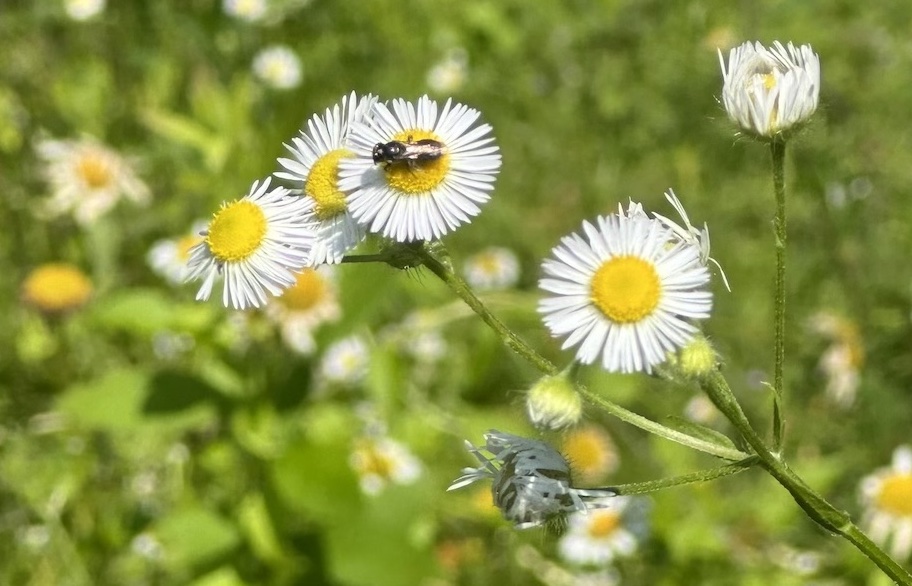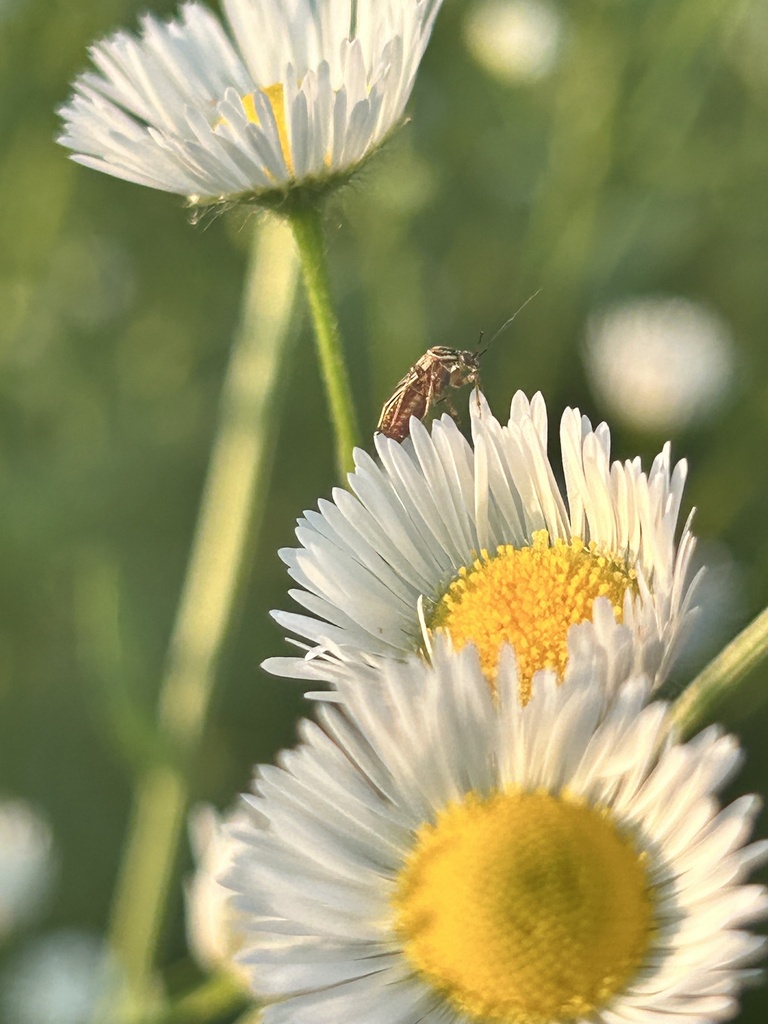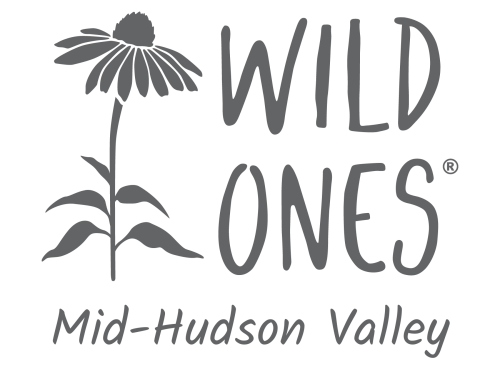New Found Respect: Daisy Fleabane
By Sara DeAngelis

Erigeron annuus (Daisy Fleabane) blooming in Dutchess County, NY. Photo: L. Wilson
I will admit that until recently, I’ve had very little respect for Erigeron annuus or Daisy Fleabane. In the past, I’ve yanked it out, roots and all, and gleefully tossed it onto the compost pile. That is until last summer when I discovered the benefits of this delicate annual. Now, I not only leave the Fleabane in place, but I also cut unwanted weeds off below the soil surface rather than yanking them out and exposing more seeds to sunlight’s stimulation!

Daisy Fleabane is in the Asteraceae family and has an open form that makes it attractive to many pollinators. The flower heads have simple white rays, while the center is lemon yellow. It blooms in the spring and continues to bloom most of the summer. In the Mid-Hudson Valley where I live, according to the New York Flora Atlas, it is a native annual that often outcompetes invasive weeds. That’s right, and it gives weeds competition and is an annual.
But it gets better! Its white flowers are held aloft and move in the breezes, and they make a lovely counterpoint to other species blooming simultaneously. It is pollinated by a variety of bees, from tiny carpenter bees and cuckoo bees to syrphid flies and small butterflies. I’ve also noticed that the families of goldfinches seem to visit it regularly. I’m assuming they’re attracted to the many insects but may also get early seed material.
Each day I explore the garden, I am amazed by the diversity of organisms that visit these flowers. Naturally, with the many pollinators visiting, there are also predators, from mantises to ambush bugs.

Sara DeAngelis is a consultant and educator in exhibition and experience design. She has been studying ecological landscape principles for several years and began focusing on gardening with native plants while living in California. She documents her plants, pollinators, and other wildlife on iNaturalist. In her spare time, she and her husband garden and are transforming much of their Ulster County yard into wildlife-friendly native gardens and meadows.
